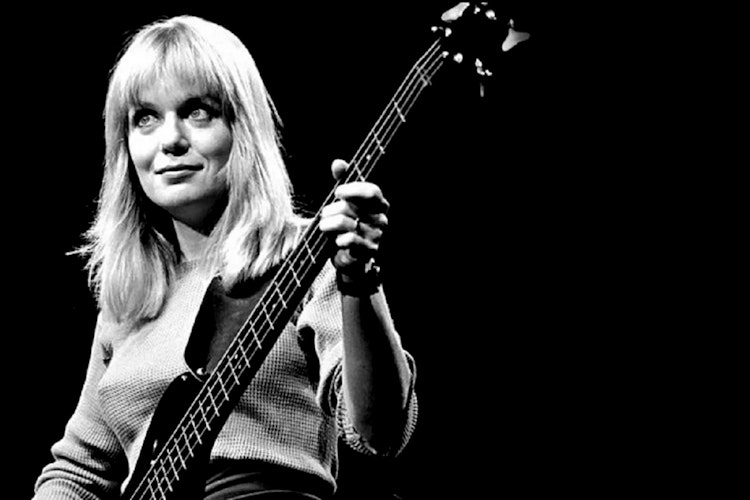In part 2 of this series, we will celebrate female artists from multiple decades who were, and still are, influential in shaping music as we know it.
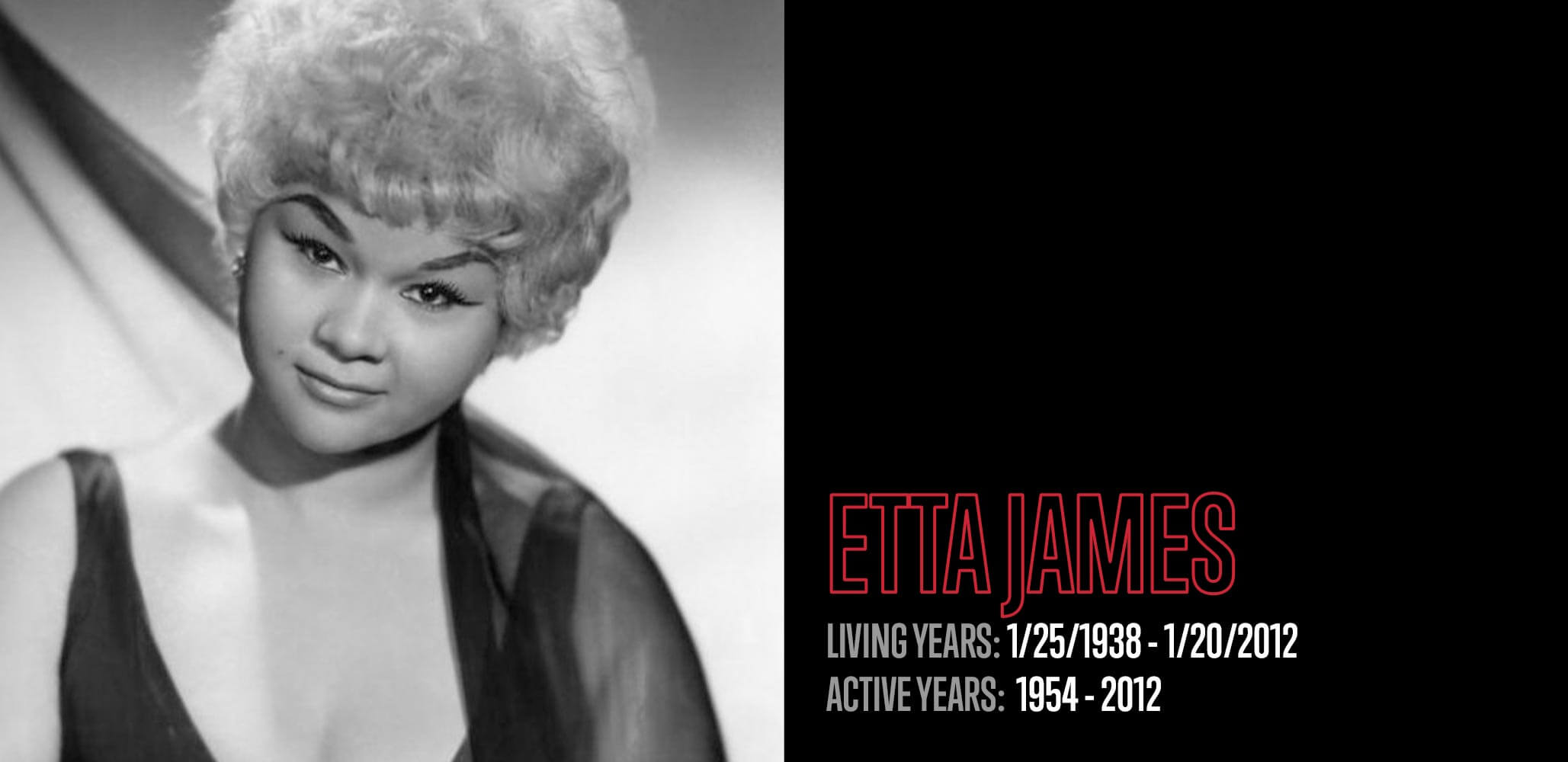
INSTRUMENT
Vocals
GENRES
Blues, R&B, Soul, Gospel, Jazz, Rock and Roll
NOTABLE SONGS
At Last, Tell Momma, Something’s Got a Hold On Me
ASSOCIATED ARTISTS/ACTS
Harvey Fuqua, Johnny Otis, Sugar Pie DeSanto, Clarence Carter, Bobby Murray
BIOGRAPHY
Etta James was a powerhouse vocalist whose style traversed many genres, including Blues, R&B, Soul, Rock and Jazz. While not fully appreciated in her prime, James has since been recognized as one of the most influential singers in American music history, especially for the way she blended the edginess of Blues and Rock with the smoother R&B and Jazz tradition.
James had some minor success in various “girl groups” in her teens before signing with Chess Records in 1960, where she quickly established herself with her well-known version of “At Last”. James continued to find success with a string of hits throughout the 1960s, including the gospel-tinged “Something’s Got a Hold on Me” and the raucous “Tell Mama”. Her style continued to evolve further into rock and funk in the 1970s. After a hiatus in the 1980s, James had a “comeback” in the 1990s, winning multiple Grammy awards including one for the album Mystery Lady, her tribute to the music of Billie Holiday.
Beyond being a dynamic vocalist and performer, renowned for her alto range and gritty delivery, Etta James was also a successful songwriter, writing many of her own songs as well as hits for other artists. She influenced some of Rock music’s most well-known singers. Janis Joplin was a huge admirer and covered “Tell Mama” in concert. James was inducted into the Rock and Roll Hall of Fame in 1993.
HISTORICAL OR CULTURAL CONTEXT
Pioneer of early R&B and Rock and Roll
ARTISTS/ACTS SHE INFLUENCED
Tina Turner, Diana Ross, Janis Joplin, Christina Aguilera, Adele, Beyoncé, Joss Stone

INSTRUMENTS
Singer, Songwriter, Guitar, Clarinet, Poet, Visual Artist, Author, Actor, Photographer
GENRES
Punk, Proto-Punk, Art Rock,
NOTABLE SONGS
Because the Night, G-L-O-R-I-A, Dancing Barefoot, People Have the Power
BIOGRAPHY
Patti was born in Chicago but is ubiquitous with the New York City art and early punk scene. Her mother was a jazz singer and waitress and her father, a machinist. Early artistic influences on her life were Bob Dylan and Harry Belafonte, as well as poets, Rimbaud, Keats, and Blake. Smith made her way to New York City in 1967 and began a prolific engagement in the Arts across disciplines. She was a member of the St Mark’s Poetry Project, a launching pad for experimental spoken word poetry. She co-wrote “Cowboy Mouth” with playwright and actor, Sam Shepard. However, her most significant relationship was with her beloved partner, roommate, and collaborator; photographer and visual artist, Robert Mapplethorpe. Together, they began frequenting Max’s Kansas City and CBGB, which were clubs beginning to showcase proto-punk acts. The pair collaborated extensively on visual art, including painting and photography. Mapplethorpe’s iconic photos of Smith are used as the cover art of The Patti Smith Group albums, of which Horses and Easter are the most acclaimed. Her book about their relationship, “Just Kids” won the National Book Award in 2010.
Smith is noted for her whirling stage presence and wild improvisations. Her first studio album was 1975’s Horses, produced by John Cale (of the Velvet Underground), recorded at Electric Lady Studios soon after she was signed to Arista Records by Clive Davis. Smith called the album, “three-chord rock merged with the power of the word.” Anchoring the album is Smith’s radical re-imagination of Van Morrison’s “G-L-O-R-I-A”, which incorporates her voice as a writer as well as a vocalist and eviscerates the misogynistic viewpoint of the original track, in which the eponymous young woman is something to “get” and “have”. Her ability to build on and draw out meaning from a track conceived by someone else is also evident on “Dancing Barefoot” (Easter, 1978), a song Bruce Springsteen cut without verses early in the process of his Darkness On the Edge of Town sessions. He shared a Producer and studio with Smith, who was encouraged to take the song, which she filled in lyrically and put her stamp on. It became a chart hit for Smith, who shares co-writing credit with Springsteen. They have performed it together live. Waves’ “Dancing Barefoot” has been widely covered and recorded, perhaps most notably by U2, who claim Smith as an influence on their own work. “People Have the Power '' is one of her most popular songs in concert and is a paramount example of art as a social and political expression to affect change. Smith has been a lifelong activist and rebel. She continues to perform regularly at a high level and has also had considerable success as a photographer, author, and actor as well. She is a multi-talented musician, songwriter, and performing artist who is uncompromising in her work and approach to life. She is considered to be a feminist hero by many and has had a broad influence on music and popular culture that has endured for decades and continues as emerging artists are turned on to her body of work. For a great look at her life and impact, check out the 2008 Documentary, “Patti Smith, Dreams of Life” and the 2018 Concert Fim, “Hores: Patti Smith and Her Band”.
Awards & Commendations:
- Commander of the “Ordre des Arts et des Lettres”, French Ministry of Culture (2005)
- Honorary Doctorate of Fine Arts, Foundation Cartier pour L’Art Contemporian (2005)
- Inducted into Rock N Roll Hall of Fame (2007)
- National Book Award for “Just Kids”, about her relationship with Robert Mapplethorpe (2010)
- Number 47 on Rolling Stone’s list of “100 Greatest Artists”
- Honorary Doctorate in Fine Arts, The Pratt Institute (2012)
- Polar Music Prize (2011)
- International Humanities Prize conferred by Washington University (2020)
- Currently Artist-In-Residence, circa.art
ARTISTS/ACTS THEY INFLUENCED
Michael Stipe, Courtney Love, U2, Sonic Youth, The Smiths, Madonna, KT Turnstall, the Florence & the Machine song, “Patricia” is about Patti Smith
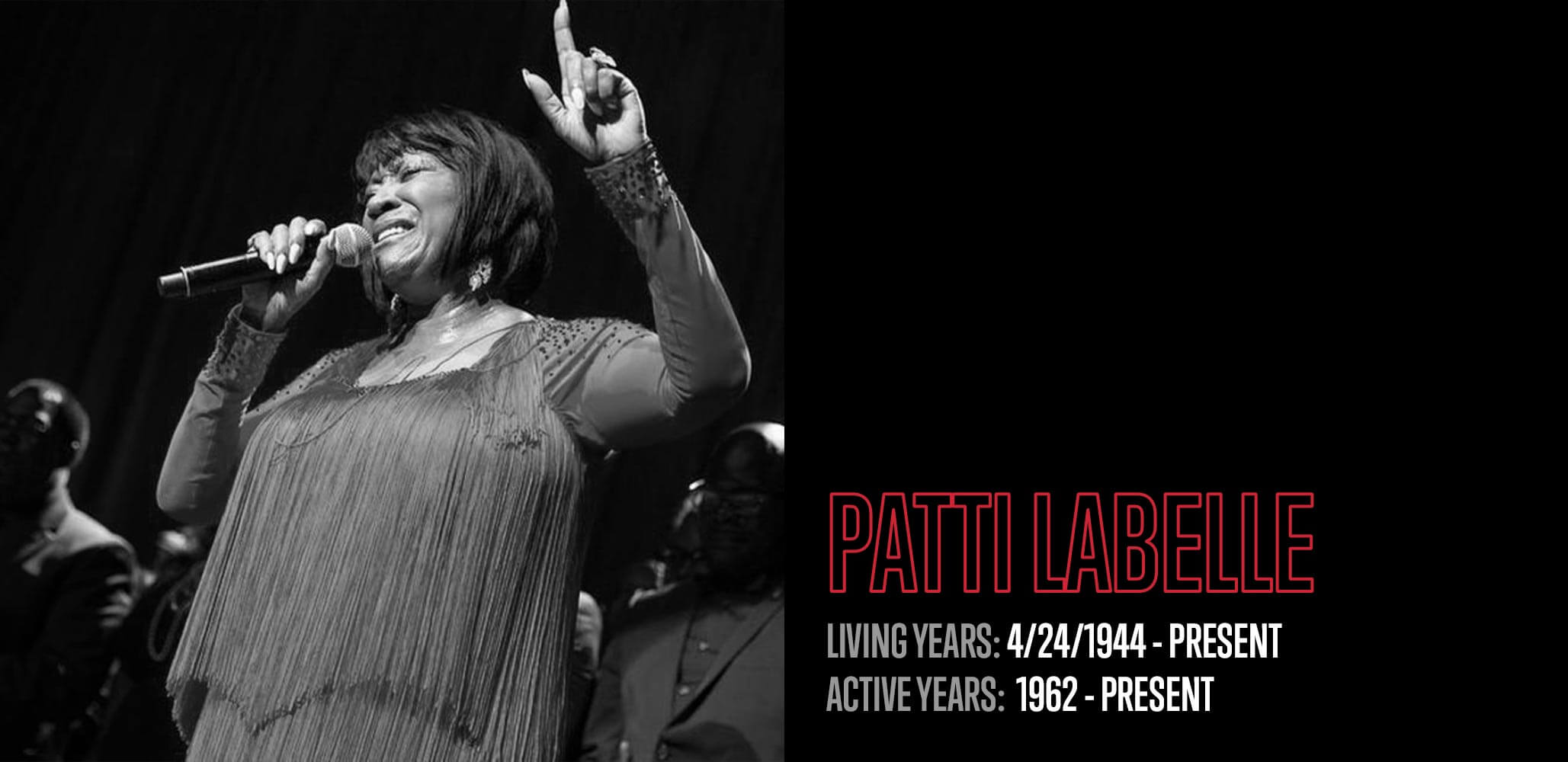
INSTRUMENT
Vocals
GENRES
R&B, Rock
NOTABLE SONGS
ASSOCIATED ARTISTS/ACTS
Labelle, Patti LaBelle & the Bluebells, The Ordettes, Teddy Pendergrass, Mariah Carey, Aretha Franklin, Michael McDonald, Amber Riley
BIOGRAPHY
Patricia Louise Holte, known by her stage name Patti LaBelle, is considered by many to be the “Godmother of Soul”. She began singing as a child and was 12 when she performed her first solo at Beulah Baptist Church. Though her roots were in Gospel music, she also listened to R&B and Jazz styles from a young age.
In 1960, Patti became the lead singer of her first singing group named the “Ordettes,” after winning a high school singing competition. In 1962, The Ordettes were signed to a local record label by Harold Robinson. They were signed as The Bluebells, and then later changed their name to Patti LaBelle and the Bluebells. The group gained national success, performing at the Apollo Theatre in New York. Initially, Robinson was unimpressed by Patti, however his opinions quickly changed when he heard her sing “I Sold My Heart to the Junkman”.
In 1970, the group was picked up by manager Vicki Wickham, who decided to change the name of the group to “Labelle”. Wickham got the band signed with Warner Music and cultivated their sound to a more hard hitting blend of Rock, Funk and Soul.
Labelle had a unique look and sound, so much so that the music industry had a difficult time categorizing the group. Their music traversed several genres, and their Glam style was a stark departure from traditional “Girl Groups”. They didn’t quite fit neatly into the conforming buckets of either white Rock music or Black R&B. As Patti LaBelle wrote in her autobiography: “We were too Black for pop, too rock for rhythm and blues, and our unique sound - an ahead-of-its-time soul-rock fusion - made airplay hard to come by.”
Beyond look and sound, Labelle broke the mold of the typical Girl Group in another important way: their music often spoke about political and social matters. For certain performances they were asked to adjust their lyrics to satisfy TV networks. Often, they would just drop certain songs completely from their set list, usually their most popular hits, rather than to give in to the demands. Their incendiary medley of “Something in the Air / The Revolution Will Not Be Televised” highlights their album Pressure Cookin’, which was not successful when released but has since become celebrated as a landmark in socially conscious Rock and R&B.
Allen Toussaint produced their 1974 album entitled Nightbirds. Toussaint managed to create a blend of Rock, Soul and Funk on this album that finally broke through to a wider audience. This album featured their biggest selling single, “Lady Marmalade” and hit number one on the Billboard Hot 100. Labelle made history later that year when they became the first rock group to perform at the Metropolitan Opera House in New York City. It was the highest point of their success as a group. Unable to repeat the success of Nightbirds, and with tensions in the band causing strain between singers Patti LaBelle, Nona Hendryx and Sarah Dash, the group disbanded in 1976.
Patti LaBelle went on to a successful solo career in the 1980s and 1990s. Her song “New Attitude” was a hit in 1984, and she became an international superstar after her appearance at Live Aid in 1985. Patti continued to release successful albums and launched an acting career, appearing in the popular TV show A Different World, along with several other movies and shows. For more than 30 years, Patti has been an advocate for LGBT rights and AIDS awareness. She and her band have had a significant yet under appreciated influence on modern Funk and R&B, and artists from En Vogue to Pink owe a debt of gratitude to this innovative artist.
HISTORICAL OR CULTURAL CONTEXT
“The Godmother of Soul”, LaBelle was a Disco and Funk pioneer
ARTISTS/ACTS SHE INFLUENCED
En Vogue, Destiny’s Child, Christina Aguilera, Mýa, Pink, Lil’ Kim
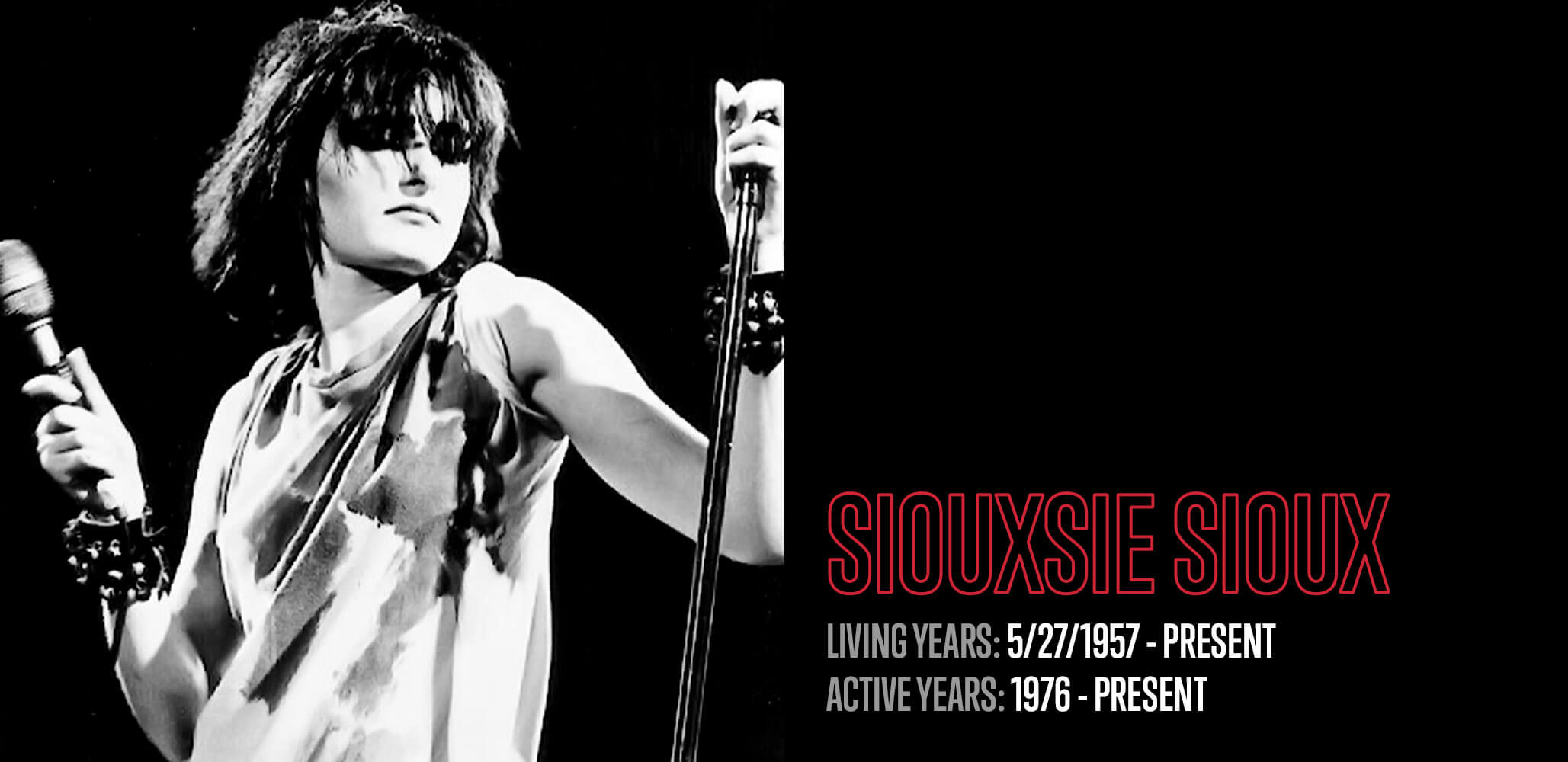
INSTRUMENTS
Vocals, Guitar, Piano
GENRES
Post-punk, New Wave, Goth, Alternative Rock
NOTABLE SONGS
Happy House, Spellbound, Cities in Dust
BIOGRAPHY
With her cat eyeliner, bright red lipstick, and jet black hair, Siouxsie Sioux is considered the Godmother of Goth. Siouxsie Sioux, most notably known as the frontwoman for Siouxsie and the Banshees, is an English singer, musician, songwriter, and producer whose influence has impacted artists across many genres. Aside from having a hand in popularizing early UK punk fashion, Sioux’s style both musically and aesthetically set the precedent for the Post-punk, New Wave, and Goth music movements.
Siouxsie Sioux, née Susan Janet Ballion was born in a quiet suburban neighborhood in south London on May 25th, 1957. Sioux’s early childhood was fraught with neglect, illness, and parental alcoholism which ultimately led to the death of her father at age 14. With distrust in society and boredom with her suburban upbringing, Siouxsie left school at the age of 17. It was during this time she began experimenting with fashion and makeup and frequenting gigs and discos around London. As a full-fledged member of the notorious Bromley Contingent, a group of followers (a young Billy Idol was one of them) of the Sex Pistols, Siouxsie’s image began to gain notoriety in the local scene. Along with another member of the Bromley Contingent, Siouxsie and the Banshees was formed in early 1976. The band’s first performance was organized by Sex Pistols producer and manager Malcolm McLaren on a whim when a slot opened up on the bill; the band did not know any songs.
Performing and touring more seriously, led the band to release their first single “Hong Kong Garden” in 1977 which landed at number 7 on the UK charts. In 1978, the band released its debut album The Scream. The Scream remains one of the first post-punk records ever recorded and established the movement’s cold, dark, jagged sound and stark, poetic lyricism. Siouxsie Sioux has an extensive mezzo-soprano vocal range that throughout her career, has flittered between melodic to pseudo-melodic shouts that are typical of Post-Punk music. From their beginnings in 1976 to their end in 1996, Siouxsie and the Banshees released 11 studio albums, each one uniquely its own and informing sub-genres like New Wave, Goth, and Alternative. Since then, Siouxsie Sioux has released several singles and an album as a solo artist.
Now in her early 60’s, Siouxsie Sioux is an active performer, songwriter, producer and collaborator. Her work has impacted and influenced a wide array of artists across many different genres. Siouxsie and the Banshees have been covered by, inspired, or been sampled by the Red Hot Chili Peppers, Jeff Buckley, The Weeknd, Santigold, Mars Volta, Depeche Mode and many many others.
ARTIST/ACTS THEY INFLUENCED
The Cure, PJ Harvey, Sonic Youth, Thom Yorke, Jane’s Addiction, Joy Division
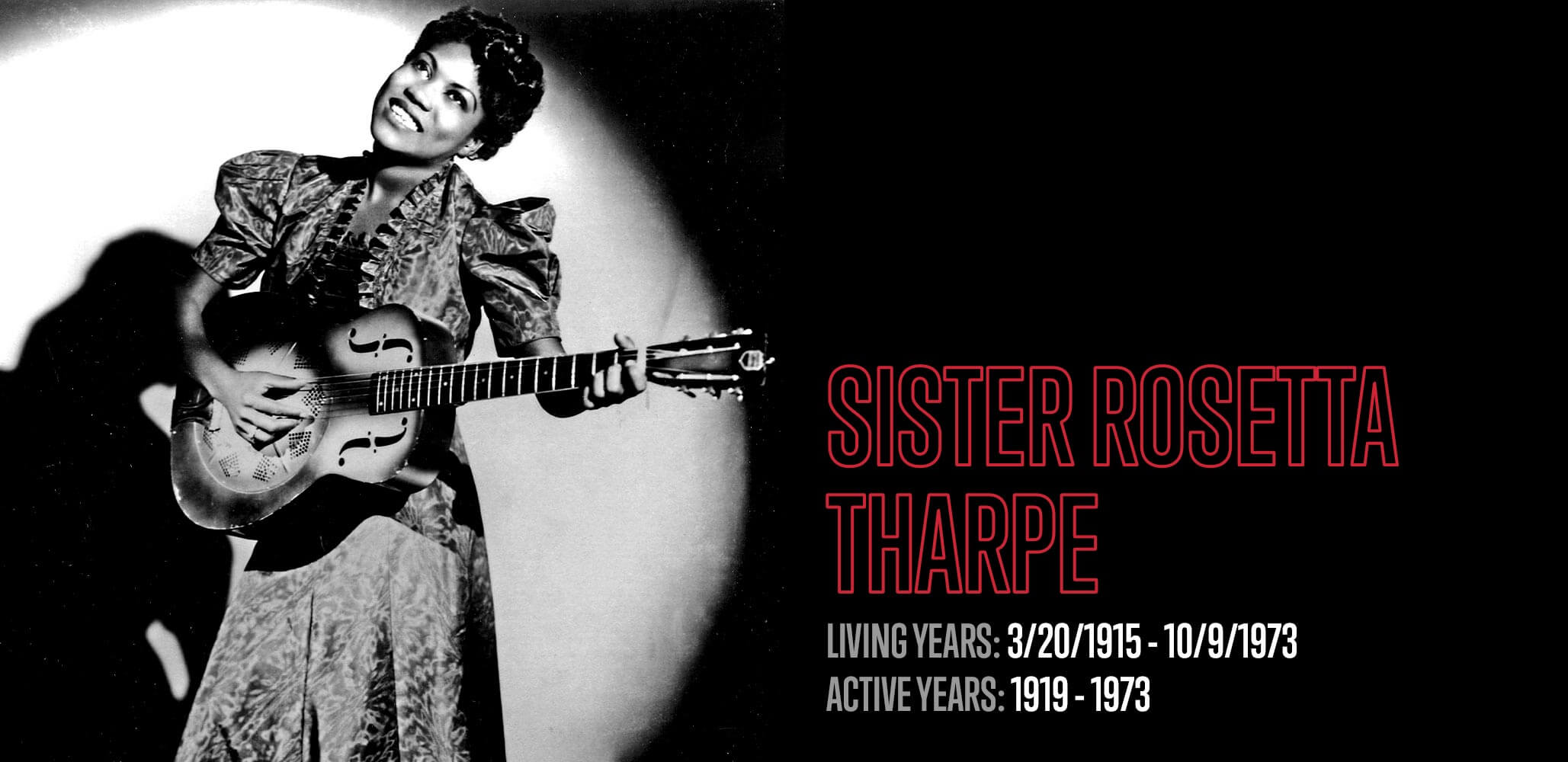
INSTRUMENTS
Vocals, Guitar
GENRES
Gospel, Jazz , Blues and R&B
NOTABLE SONGS
Strange Things Are Happening Everyday, Rock Me, That’s All, My Man and I, Lonesome Road
ASSOCIATED ARTISTS/ACTS
Cab Calloway, Muddy Waters, Duke Ellington
BIOGRAPHY
Sister Rosetta Tharpe is universally considered to be the Godmother and inventor of Rock and Roll. She was the first gospel artist to successfully make the crossover to wider audiences, popularizing spiritual music and introducing the use of the electric guitar into mainstream music. Memphis Minnie, Bessie Smith and Ma Rainey, along with hymns and spirituals were all influential in shaping Rosetta’s musical style.
The Great Migration of the 1920s brought Rosetta and her mother from rural Arkansas to Chicago. A better life and opportunities were greater for Blacks in bigger cities. Rosetta brought her roots in Gospel music and the soulful, Black sounds of the Blues. She was known for her incredible vocal range, her stunning full-bodied vibrato, and her impressive vocal agility. Her vocal phrasing captured her beefy sound that leaned into her heavy Blues influences.
She was a foundational artist who precedes those we commonly think of today as cornerstone, Rock and Roll pioneers. She influenced artists such as Little Richard, Chuck Berry, Elvis Presley, Johnny Cash, as well as many 1960s British guitarists. Her song “Strange Things Are Happening Everyday” was recorded in 1945. It became the first Gospel record to cross over to the “Race Records” Billboards chart, and is considered by some to be the first Rock and Roll record.
It was revolutionary for Tharpe, a Black woman, to straddle the fence in playing at both churches and nightclubs. However, this caused her to receive a great deal of criticism from disapproving church members. She was not only one of the first artists to perform with an electric guitar but she spiced things up by being the first female artist playing it during its debut in the 1930s. This was an unheard of accomplishment during this time in American society. It can be said that Tharpe’s flamboyant style, rebellious nature, and stage theatrics shaped the rawness of the earliest rock and rollers.
In the 1960s, Tharpe’s celebrity status grew as well overseas in Europe. Muddy Waters was one of the artists she toured with in Europe. In 1964, British television filmed the “Blues and Gospel Train” that included her performance at Wilbraham Road train station in Whalley Range, a performance which is legendary in the influence it had on many of the British rock musicians who saw it. Sister Rosetta Tharpe was inducted into the Rock and Roll Hall of Fame in 2018.
TECHNICAL INNOVATIONS
Electric guitar pioneer
ARTISTS/ACTS THEY INFLUENCED
Elvis Presley, Chuck Berry, Little Richard, Johnny Cash
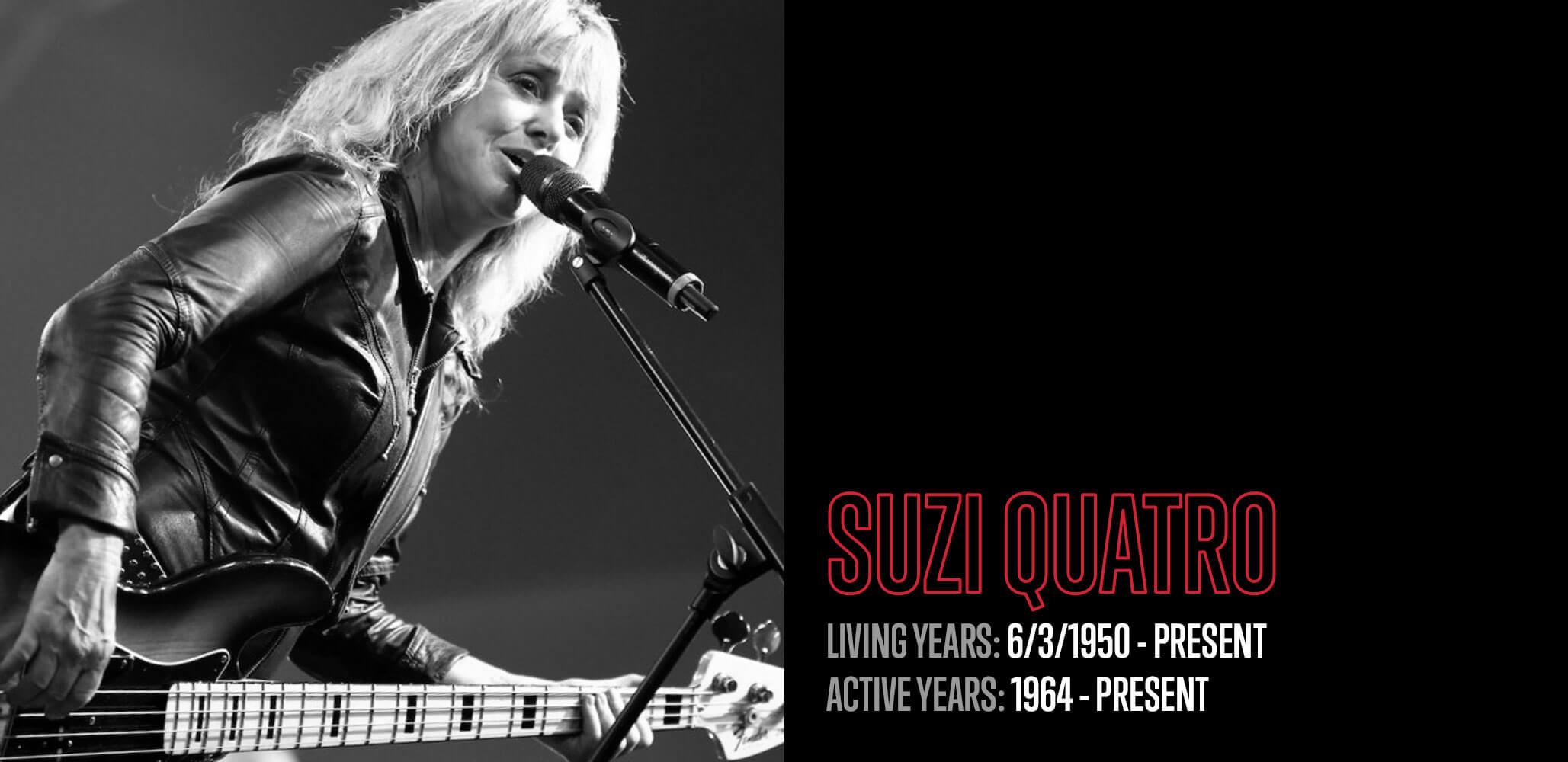
INSTRUMENTS
Vocals, Bass
GENRES
Rock, Glam Rock, Pop Rock
NOTABLE SONGS
Can the Can, The Wild One, Devil Gate Drive
BIOGRAPHY
Suzi Quatro helped pave the way for female rock and roll musicians. Born in Detroit in 1950, Quatro was a part of a musical family. Her father, Art, had a jazz band called “The Art Quatro Trio”. Quatro’s siblings all were musical and she studied piano and percussion from an early age. In 1964 at the age of 14, she started a band with her sister, Patti, called “The Pleasure Seekers”. In addition to singing, Suzi played bass guitar. They had a successful touring career for the next seven years. The band then changed their name to “Cradle”. The Pleasure Seekers are considered one of the first all-female Rock and Roll bands and their single “What a Way to Die” is considered a Garage Rock classic.
In 1971, producer, Mickie Most, saw Quatro perform at a concert and offered her a solo record deal on his label, Rak Records. At the time, she was also being courted by Elektra, who offered to make her “the next Janis Joplin”. Quatro, always fiercely independent, didn’t want to be marketed as sounding like any other artist. She accepted Most’s offer and moved to England that year.
During the next year, Most worked with Quatro on honing in on her craft and helping her find the sound that was uniquely her own. In 1972, Quatro landed an opening spot on a Thin Lizzy/Slade tour. In 1973, her second single, “Can the Can” was released and went to #1 on the charts in the UK and Australia. Between 1973 - 1980 Quatro sold over 55 million records.
In 1977, Quatro landed the role of Leather Tuscadero on the hit show, “Happy Days” and played that role for the next two years. The next year, Suzi had a worldwide hit single with “Stumbling In” a duet with Chris Norman. She also landed roles in musical theatre and was one of the first acts to play in Russia. Suzi Quatro continues to break down barriers and is a true role model for female musicians across the decades. Her drive and tenacity to do what she loved transcends any gender.
ARTISTS/ACTS THEY INFLUENCED
Joan Jett, The Runaways, The Go-Go’s, Chrissie Hynde, KT Tunstall, Tina Weymouth
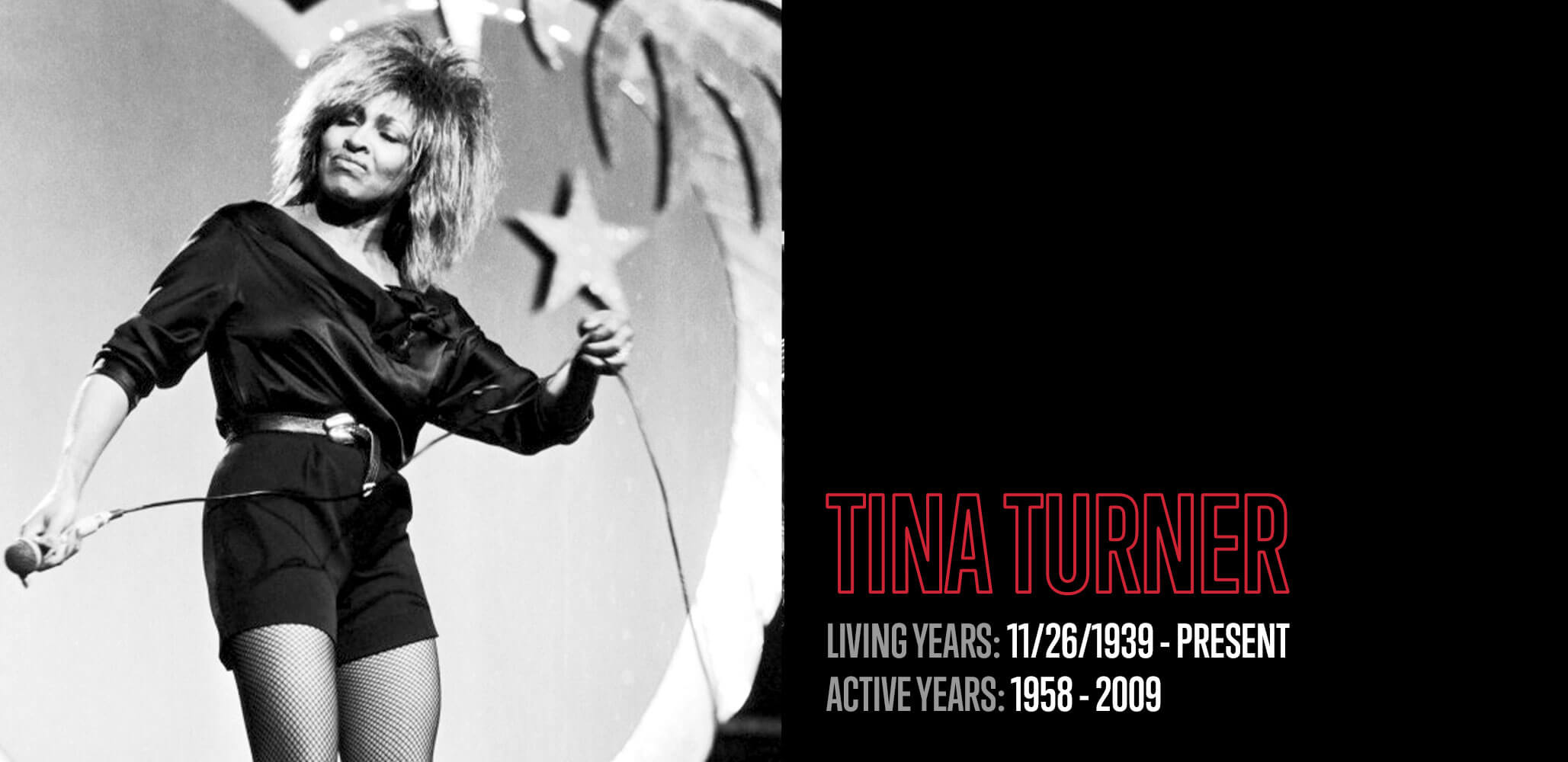
INSTRUMENT
Vocals
GENRES
Rock and Roll, Blues, Disco, R&B
NOTABLE SONGS
Proud Mary, Nutbush City Limits, What’s Love Got To Do With It
ASSOCIATED ARTISTS/ACTS
Ike and Tina Turner, David Bowie, Bryan Adams, Mick Jagger
BIOGRAPHY
Born Anna Mae Bullock, Tina Turner overcame humble beginnings and an abusive marriage to become the Queen of Rock and Roll. Born in Brownsville, Tennessee, the daughter of sharecroppers, she helped her family by picking cotton when she was young. She got started singing in church in Nutbush, Tennessee. As a teenager she moved to St. Louis to live with her sisters and stepmother. She and her sisters used to go to nightclubs after work.
While out at one of these nightclubs she met Ike Turner. Tina sat in with Ike’s band one night and soon after started her personal and professional relationship with Ike, changing her name to Tina Turner. In 1960, Ike and Tina Turner had their first hit single with “Fool in Love". With “Ike and Tina Turner”, Tina released hits like “Nutbush City Limits” and her iconic version of Creedence Clearwater Revival’s “Proud Mary”.
In the mid 70s, Ike and Tina Turner divorced. Tina cited irreconcilable differences and domestic abuse. She started her solo recording career in 1983 and gave us hits like “What’s Love Got To Do With It” and “Private Dancer”. She’s had collaborations with David Bowie, Bryan Adams, and Mick Jagger, and is more recently enjoying success with modern DJ remixes of “What’s Love Got To Do With It”.
Tina Turner was inducted into the Rock and Roll Hall of Fame in 1991 and has won Grammys for Best Female Vocal Performance, Best Solo Performance, and Best Album, among others. She has paved the way for strong female vocalists of every genre.
HISTORICAL OR CULTURAL CONTEXT
In a time where a lot of white artists were making Black music popular with crossover hits, Ike and Tina did the opposite when they covered Proud Mary
ARTISTS/ACTS SHE INFLUENCED
Beyoncé, Whitney Houston, Mariah Carey
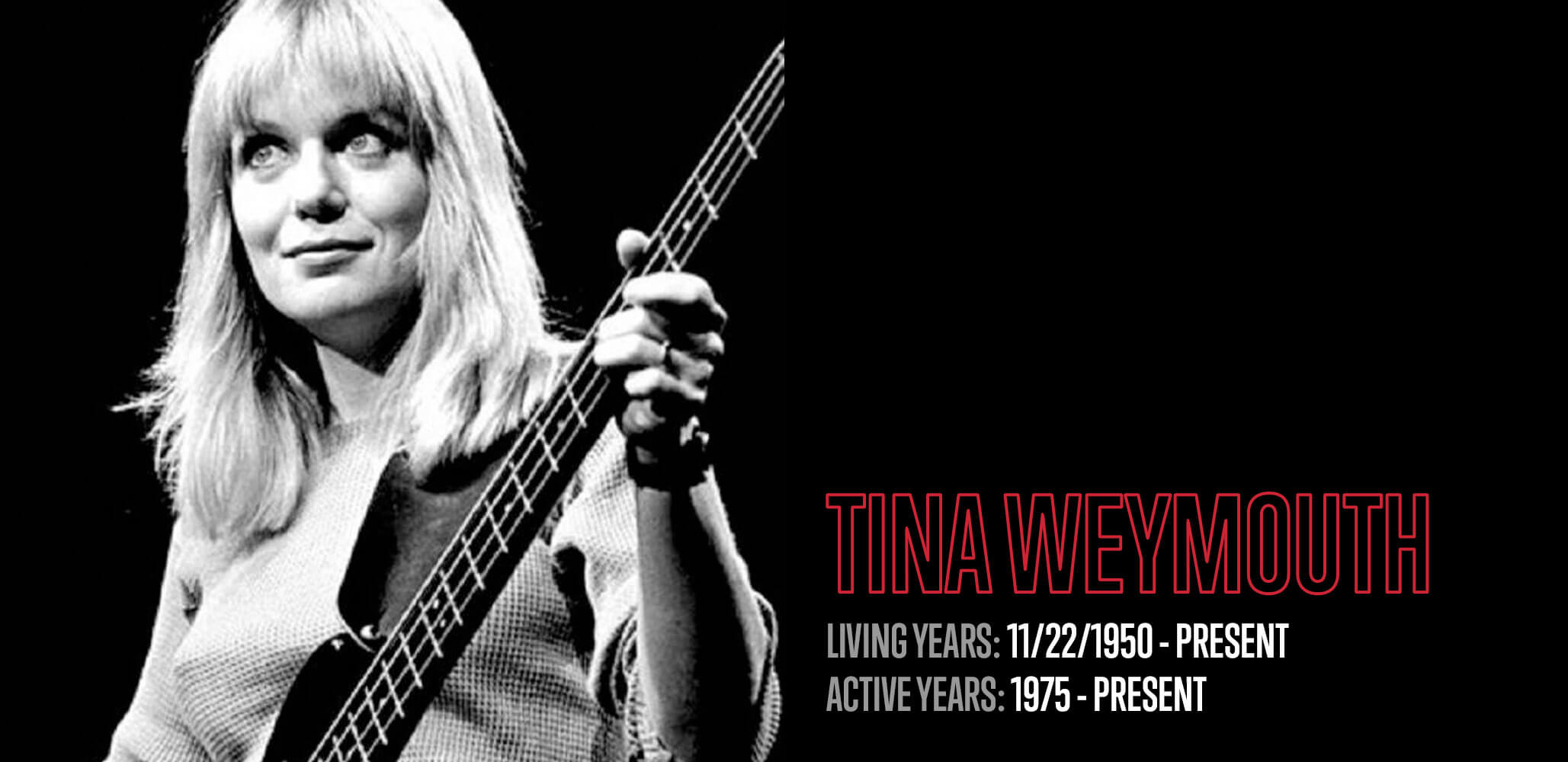
INSTRUMENTS
Bass, Vocals, Guitar, Synthesizer, Songwriter
GENRES
Rock, New Wave, Post Punk, Art Pop, Funk
NOTABLE SONGS
Psycho Killer, Genius of Love, Born Under Punches, Found A Job
ASSOCIATED ACTS/ARTISTS
Talking Heads, Tom Tom Club
BIOGRAPHY
On November 22nd, 1950 Tina Weymouth was born in Coronado, California to Laura Bouchage and Ralph Weymouth, becoming the third of seven children in her family. Moving around the country throughout her adolescence due to her father’s position as a US Navy pilot, Tina developed an interest in both the visual arts and music, giving her recluse from her large family at home. At the age of thirteen, she auditioned for and was accepted into a touring group of English Handbell Ringers, and around age fourteen she began teaching herself guitar - primarily listening to and teaching herself the stylings of Pop and Folk groups such as the Beatles, Bob Dylan, and Peter Paul & Mary.
In 1970 Tina started attending the Rhode Island School of Design and met her future husband Chris Frantz, who had started a rock group called The Artistics with vocalist/guitarist David Byrne. Alongside Chris, Tina attended every band rehearsal and show the Artistics played, eventually contributing her very first bass line in one of those rehearsals while tinkering around with an early version of the song Psycho Killer. Upon her graduation from RISD with a BFA in painting in 1974, both she and Chris relocated to New York City following David to live as a trio in the Lower East Side. Abandoning the Artistics name, David and Chris started writing new material with the moniker Talking Heads, and in need of a bassist, Tina fell into the role with some persuasion. After a few months of rehearsal, the group made their debut public appearance in 1975 opening for The Ramones at CBGB’s and gained attention quickly as they fell into the New Wave Punk scene alongside groups such as Blondie, Television, and Patti Smith. By the end of 1976 Talking Heads was signed to a record contract with NYC-based label Sire Records, and shortly thereafter they added a fourth member on guitar and keyboards, Jerry Harrison. Their debut album Talking Heads: 1977 was called “an absolute triumph” and “one of the definitive records of the decade” by Rolling Stone, with the single (Psycho Killer) rising up the charts.
Through the remainder of the decade Talking heads evolved their sound with Brio Eno producing their albums More Songs About Buildings and Food (1978), Fear of Music (1979), and Remain In Light (1980). During a break from touring with Talking Heads, Tina and Chris decided to record an album as a side project, calling the group Tom Tom Club. After releasing a self-titled debut album as Tom Tom Club, their song (Genius of Love) shot to the top of the R&B and Disco charts. In 1982 they resumed recording and touring with Talking Heads, resulting in one of their most popular albums Speaking In Tongues (1983) as well as three more studio albums, earning them gold and platinum sales, in addition to two feature-length films - one of which was the groundbreaking concert film Stop Making Sense directed by Jonathan Demme.
With the completion of Stop Making Sense and Talking Heads final US tour, Chris and Tina went on to record six studio albums with Tom Tom Club, and went on to produce two albums for Ziggy Marley, with the first winning the 1988 Grammy Award for Best Reggae Album. Their song (Genius of Love) has been sampled over a hundred times and has gone on to be featured on hit songs by Mariah Carey and Grand Master Flash. In 2002 Talking Heads were inducted into the Rock & Roll Hall of Fame, where the group reunited to perform their hits (Psycho Killer), (Life During Wartime) and (Burning Down the House).
The innovations of Talking heads created an impact that is long-lasting, with their roots as pioneers of the New Wave movement they created a sound that combined Art Pop, Punk, Funk, Pop Rock, and polyrhythmic World Beat. Without Tina’s perspective and approach to the bass, Talking Heads would not have the unique and trailblazing repertoire that continues to inspire musicians and fans today. Tina’s unique style zeroed in on supporting the rhythm of a song through articulation, playing with both space and note suspension to accentuate or punch moments of a song. They are also undoubtedly some of the catchiest and most ear worm-worthy bass lines ever written. Talking Heads have gone on to be cited as an influence to artists such as Primus, Eddie Vedder, St. Vincent, and Radiohead - whose very namesake is lifted from the Talking Heads song (Radio Head) off their 1986 album True Stories.
TECHNICAL INNOVATIONS
Layering synth bass and electric bass together
ARTISTS/ACTS THEY INFLUENCED
Radiohead, Primus, Eddie Vedder, St. Vincent, Trent Reznor, The Weeknd, Vampire Weekend, The 1975
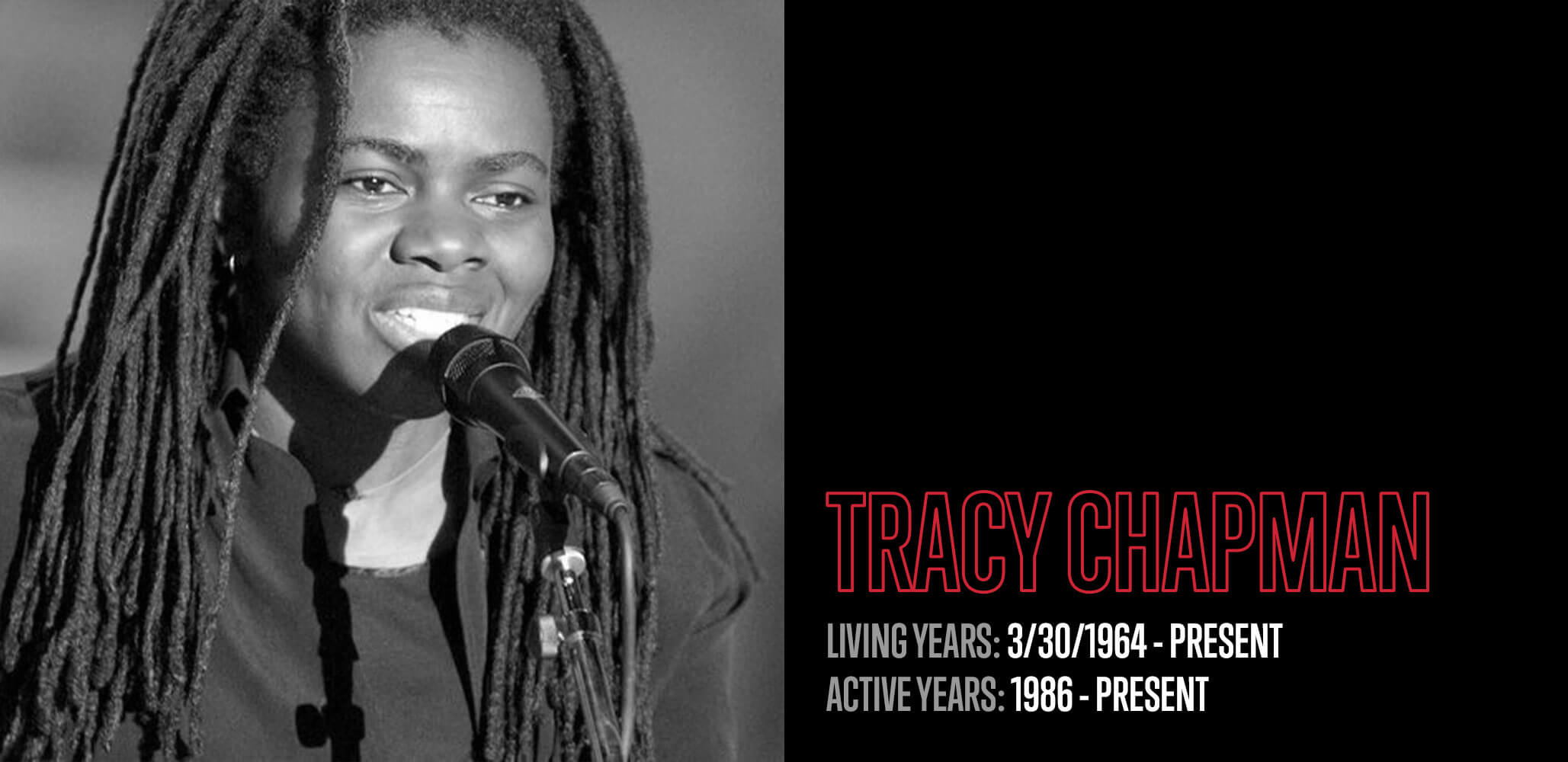
INSTRUMENTS
Vocals, Guitar
GENRES
Folk, Rock, Blues, Pop
NOTABLE SONGS
Fast Car, Give Me One Reason, Talkin Bout a Revolution
BIOGRAPHY
Tracy Chapman is a Grammy-winning singer songwriter. Her distinctive voice and social activism has earned her a strong international following. Tracy was born in Cleveland, Ohio, in 1964, and she began playing guitar and writing her own songs at age eight. She went off to study at a college prep school and then attended Tufts University.
While at college, Tracy began to perform and she soon caught the attention of a music publisher. After graduating college in 1986, Chapman signed with Elektra Records. Her first single “Fast Car” propelled her to instant celebrity. Her self-titled debut album won three Grammy Awards, including Best New Artist. She continued to release albums, and her fourth album, New Beginnings, featured the hit single “Give Me One Reason”, which won the Grammy for Best Rock Song and sold over five million copies in the US.
Chapman has continued to release music and tour, but her schedule has slowed down considerably. She continues to advocate and perform for various social causes such as civil rights and the eradication of poverty.
HISTORICAL OR CULTURAL CONTEXT
Best selling female singer songwriter, advocate for civil rights and eradication of poverty
ARTISTS/ACTS SHE INFLUENCED
Ani DiFranco, Ed Sheeran
This article was last updated in March, 2021.



